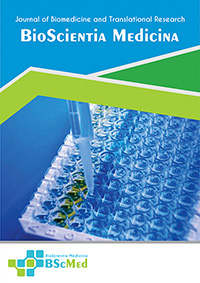Main Article Content
Abstract
Background. Breast cancer is one of the four types of cancer among women and is the most frequently diagnosed in most countries. Breast cancer occurs due to DNA damage and genetic mutations affected by exposure to estrogen, inheritance of damaged DNA, or pro-cancer genes such as BRCA1 and BRCA2. Therefore, a family history of ovarian cancer or breast cancer increases the risk of developing breast cancer. The embryo of the breast develops around the age of 6 weeks of pregnancy. Similar to breast development, fingerprint patterns also develop during the 6-13 weeks of pregnancy. Thus, the genetic message contained in the genome occurred during that period and was reflected in the dermatoglyphic pattern.
Methods. The literature search was systematically used using PubMed, Cochran, Google scholar, and other Gray literature between 2010-2020. Of the 69 publications identified, 21 met the criteria and were included in the review. The review is carried out following the provisions of PRISMA (Preferred Reporting Items for Systematic Review).
Results. This systematic review showed fairly consistent findings in breast cancer patients who tended to have more whorl fingerprint patterns and larger ATD angles. For radial loops, ulnar loops and arches were minor compared to the control group potential as an initial screening tool in at-risk groups.
Conclusion. Long-term and follow-up studies with larger sample sizes in various ethnicities are needed to validate dermatoglyphics in anthropometric measurements as a promising marker of breast cancer.
Keywords
Article Details
As our aim is to disseminate original research article, hence the publishing right is a necessary one. The publishing right is needed in order to reach the agreement between the author and publisher. As the journal is fully open access, the authors will sign an exclusive license agreement.
The authors have the right to:
- Share their article in the same ways permitted to third parties under the relevant user license.
- Retain copyright, patent, trademark and other intellectual property rights including research data.
- Proper attribution and credit for the published work.
For the open access article, the publisher is granted to the following right.
- The non-exclusive right to publish the article and grant right to others.
- For the published article, the publisher applied for the Creative Commons Attribution-NonCommercial-ShareAlike 4.0 International License.





